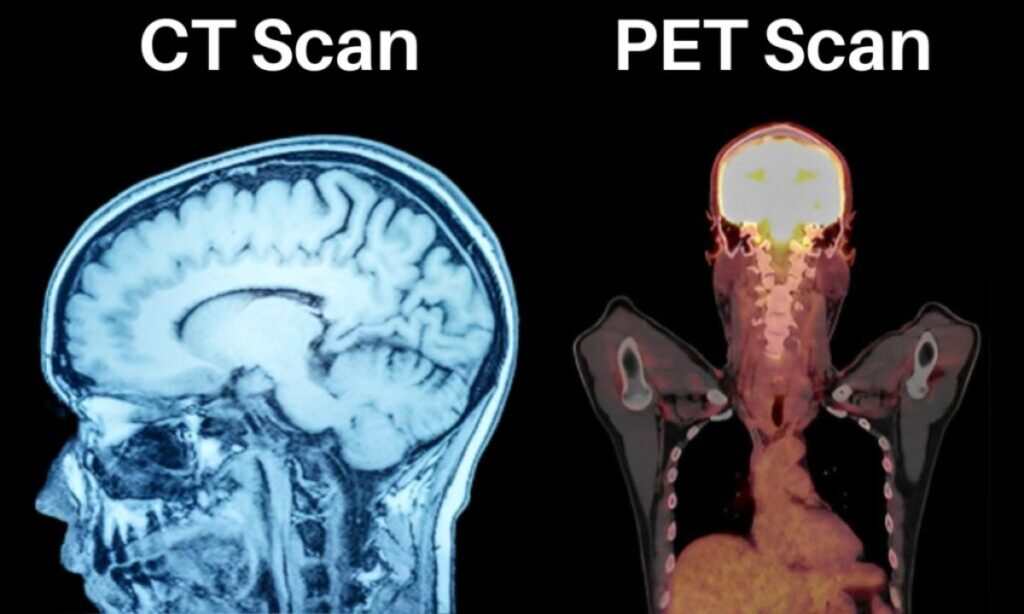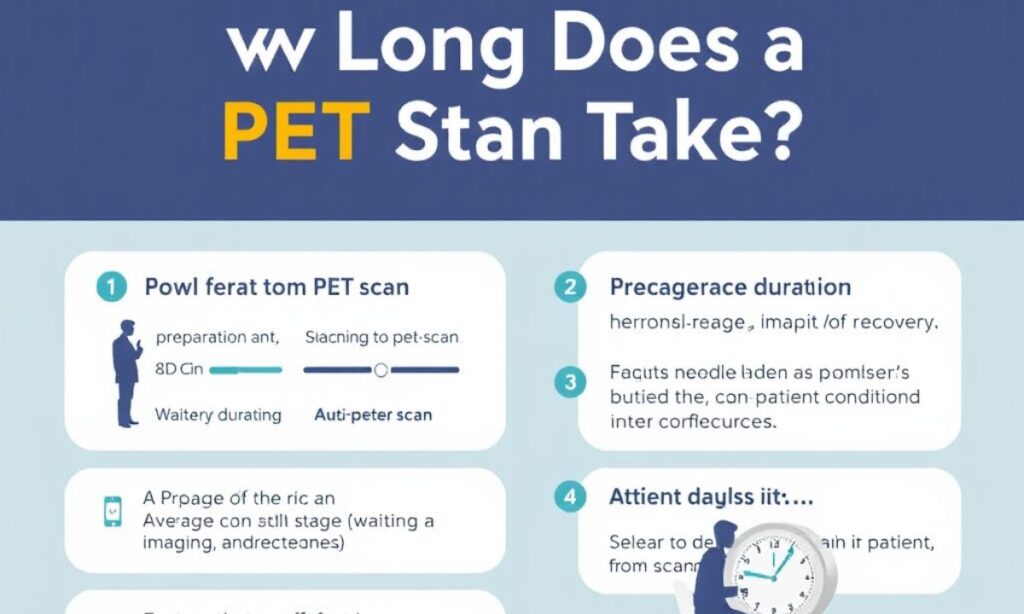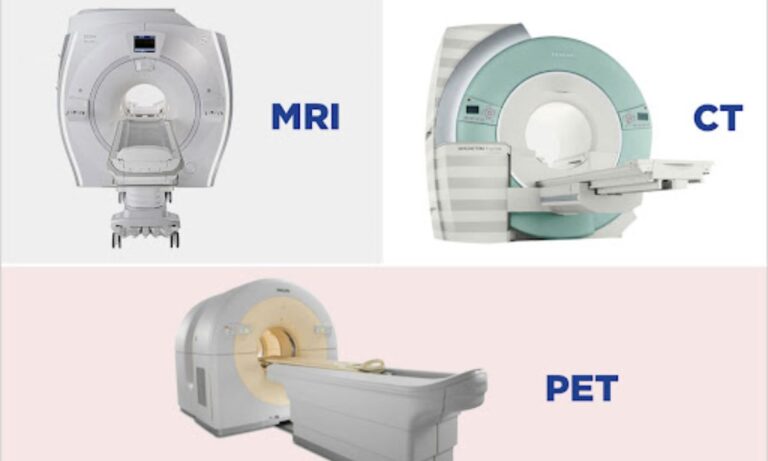Medical imaging technologies, including PET scans, CT scans, and MRI, have revolutionized healthcare, enabling doctors to diagnose conditions accurately and efficiently. These scans differ in how they capture and interpret images of the body.
In this article, we’ll explore the differences between PET scans, CT scans, and MRIs, providing detailed insights into each type of scan’s purpose, procedure, and benefits.
What’s the Difference Between a PET Scan, CT Scan, and MRI?
While all three of these imaging technologies—PET, CT, and MRI—are used for diagnosing and monitoring a variety of health conditions, they each have distinct features and applications. Understanding these differences can help clarify when a specific type of scan is required.
PET Scan vs. CT Scan vs. MRI
| Aspect | PET Scan | CT Scan | MRI |
| Purpose | Measures metabolic activity of tissues and organs | Provides detailed structural images of the body | Provides detailed images of soft tissues and organs |
| What It Detects | Cell activity and function (e.g., cancer, heart disease, neurological disorders) | Structural issues (e.g., fractures, tumors) | Soft tissue details (e.g., brain, spinal cord, muscles) |
| Technology Used | Radioactive tracer and gamma rays | X-rays and computer processing | Magnetic fields and radio waves |
| Duration | 30-60 minutes | 10-30 minutes | 20-60 minutes |
| Radiation | Yes, involves exposure to a small amount of radiation | Yes, involves exposure to X-ray radiation | No radiation involved |
| Common Uses | Cancer detection, neurological issues, heart disease | Fractures, internal bleeding, cancers | Brain, spinal cord, and muscle conditions |
What Does a PET Scan Check For?
A PET scan is primarily used to assess the metabolic activity of cells, allowing doctors to detect abnormalities that other imaging tests may not identify. This scan is valuable in diagnosing various conditions, including:
- Cancer Detection and Monitoring: PET scans can identify areas where cells are rapidly dividing, a hallmark of cancer. They help in locating tumors and monitoring the effectiveness of treatments like chemotherapy.
- Heart Disease: By assessing how well blood flows to the heart muscle, PET scans can detect areas of poor blood supply or heart tissue damage, which is especially useful after a heart attack.
- Neurological Conditions: PET scans are often used to diagnose Alzheimer’s disease, seizures, and dementia, as they can identify changes in brain activity related to these conditions.
- Inflammation and Infection: PET scans can also detect areas of the body that are inflamed or infected, which is important for diagnosing certain chronic diseases.
Read This Blog; Can You Keep a Blue-Tongue Lizard as a Pet?
When Would You Need a PET Scan?
Your doctor may recommend a PET scan for a variety of reasons, particularly if you’re experiencing unexplained symptoms or need a more detailed evaluation of a specific area of the body. Some common reasons for needing a PET scan include:
- Cancer Diagnosis and Staging: A PET scan is often used to locate and measure the size of tumors, especially when cancer is suspected or known to be present. It is also used for staging cancers to determine whether the cancer has spread.
- Heart Disease Evaluation: If you have chest pain or a history of heart disease, a PET scan can help assess how well blood is flowing to your heart muscle and identify areas of damage.
- Brain Function Disorders: A PET scan can help evaluate brain activity, aiding in the diagnosis of conditions like Alzheimer’s disease, epilepsy, and depression.
- Monitoring Treatment Effectiveness: For patients undergoing cancer treatment, PET scans can be used to see how well the treatment is working and determine whether a change in therapy is needed.
How Does a PET Scan Work?

A PET scan works by using a small amount of radioactive material (tracer) that is injected into the body. This tracer is typically a sugar molecule, such as glucose, which cells in the body naturally absorb.
The radioactive tracer emits positrons, which the scanner detects. This allows the PET machine to create detailed images of the tissues and organs in the body, showing areas with abnormal metabolic activity.
How Do I Prepare for a PET Scan?
Preparation for a PET scan is typically straightforward, but there are certain guidelines to follow:
- Fasting: You may be asked to fast for at least four to six hours before the scan. This helps ensure that your body is in a state where the glucose tracer is absorbed properly.
- Avoid Certain Foods: Certain foods, especially those high in sugar or carbohydrates, should be avoided prior to the scan, as they can interfere with the effectiveness of the procedure.
- Medications: Make sure your doctor is aware of any medications you’re taking, as some can affect the results. For instance, medications for diabetes may need to be adjusted before the scan.
- Comfortable Clothing: Wear loose-fitting clothing, and avoid wearing any metal items, such as jewelry, that could interfere with the scan.
Read This Blog; Why Does My Dog Groan When I Pet Him?
What Should I Expect During a PET Scan?
During the PET scan procedure, you can expect the following steps:
- Tracer Injection: A small amount of radioactive glucose will be injected into your bloodstream. You’ll then wait for about 30-60 minutes to allow the tracer to circulate throughout your body and be absorbed by tissues.
- Scanning: You’ll be asked to lie on a table, which will move you into the scanner. The PET scanner uses a ring-shaped machine that detects the radiation emitted by the tracer.
- Remaining Still: It is crucial to remain as still as possible during the scan to get clear, accurate images.
- Duration: The scan itself usually takes about 30 to 60 minutes, but the entire process, including waiting for the tracer to be absorbed, may take longer.
How Long Does a PET Scan Take?

A PET scan generally takes 30 to 60 minutes for the imaging portion. However, the entire procedure, including the preparation time (such as waiting for the tracer to circulate), could take 1 to 2 hours.
What Are the Risks and Side Effects of a PET Scan?
While PET scans are considered safe, there are some risks and potential side effects:
- Radiation Exposure: Although the amount of radiation used is low, any exposure to radiation carries some risk. However, the benefits of the scan generally outweigh the risks.
- Allergic Reaction to Tracer: In rare cases, people may experience mild allergic reactions to the radioactive tracer.
- Discomfort: You may feel some discomfort from the injection or have trouble lying still for an extended period.
Despite these potential risks, PET scans are a critical diagnostic tool and are used under controlled circumstances to ensure patient safety.
When Should I Get My PET Scan Results?
Once your PET scan is completed, the results are usually available within 24 to 48 hours. The scan images are analyzed by a radiologist, who will send the results to your doctor. Your doctor will discuss the findings with you, and if necessary,
It’s essential to follow up with your healthcare provider to discuss your results and any further testing or treatment that may be needed.
Frequently Asked Questions
How is a PET scan different from an MRI?
A PET scan shows metabolic activity and helps detect abnormalities like tumors or areas of inflammation, while an MRI focuses on creating detailed images of soft tissues
Can a PET scan detect all types of cancer?
PET scans are highly effective for detecting many types of cancer, particularly those that are metabolically active. However.
Is there any preparation required for a PET scan?
Yes, preparation typically involves fasting for a few hours before the scan, avoiding foods high in sugar or carbohydrates, and informing your doctor about any medications you’re taking.
Can a PET scan be used to diagnose brain disorders?
Yes, PET scans are commonly used to diagnose neurological disorders such as Alzheimer’s disease, epilepsy, and seizures, by measuring brain activity and identifying abnormal regions.
Conclusion
In conclusion, understanding the differences between a PET scan, CT scan, and MRI is essential for choosing the right imaging test based on your medical condition. Each scan serves a distinct purpose:
The choice of imaging technique depends on your symptoms, medical history, and what your doctor needs to see. Understanding the benefits and limitations of each scan can help you feel more confident and prepared for your medical journey.
